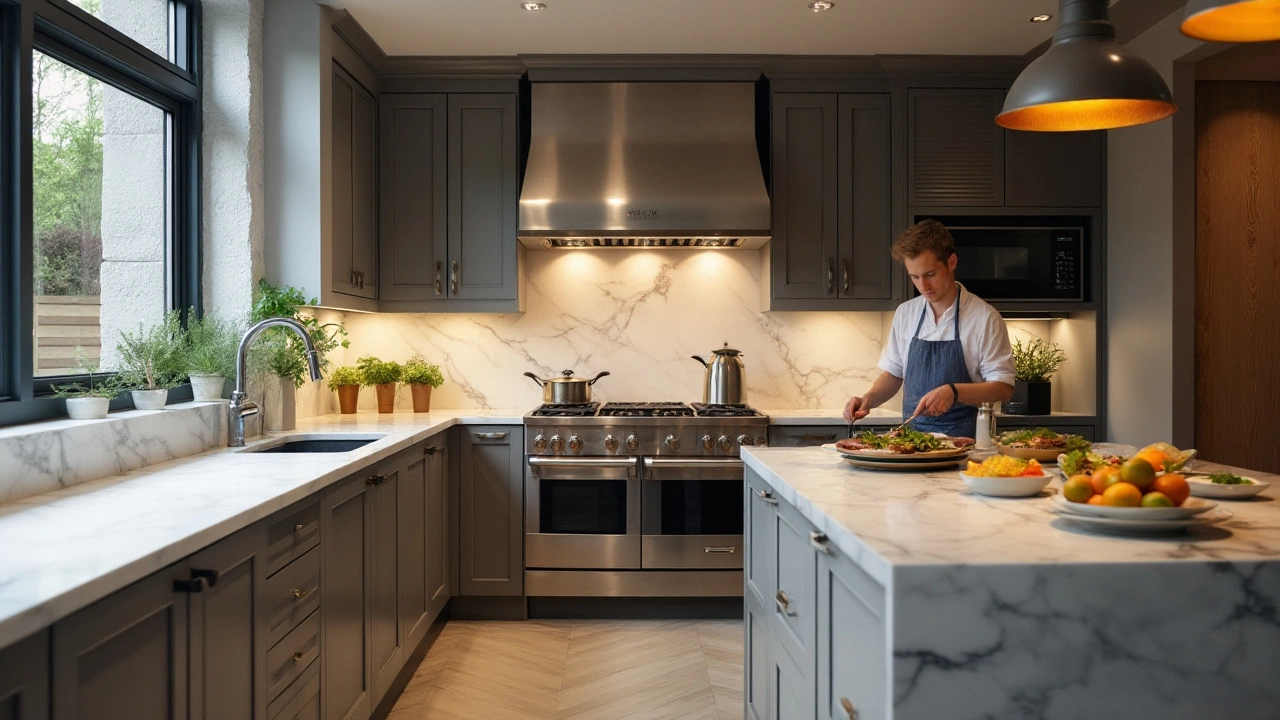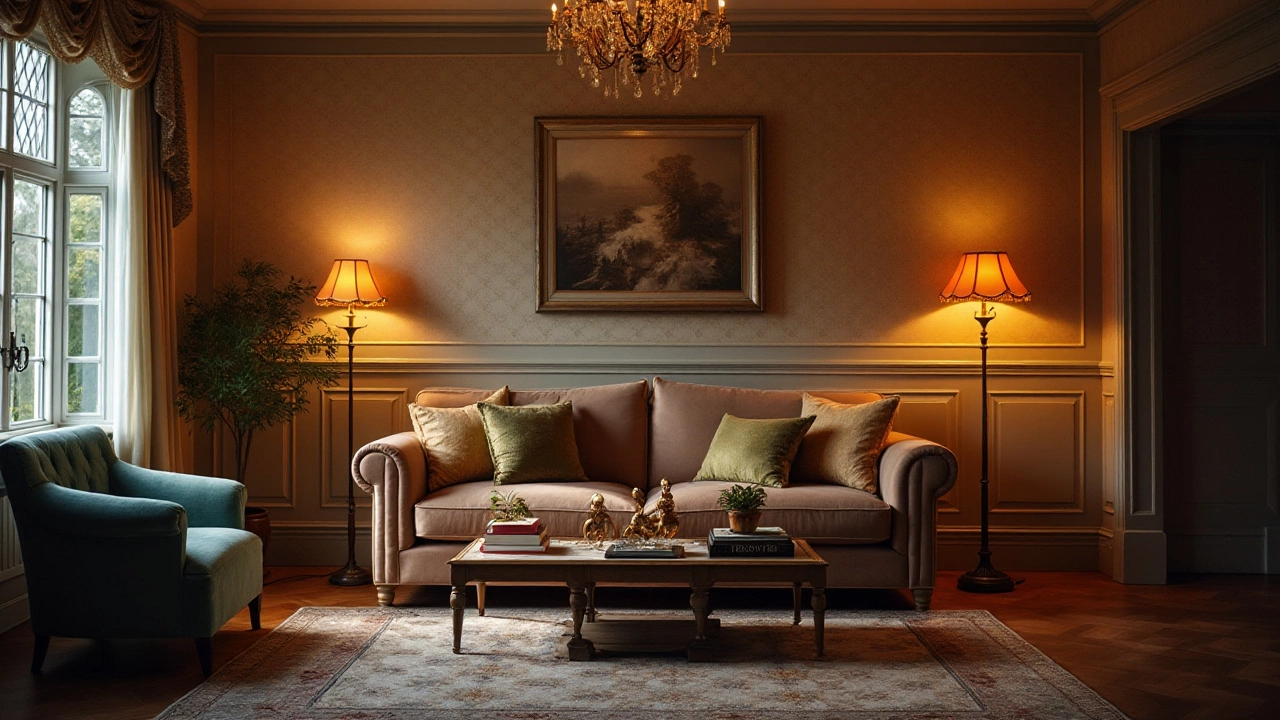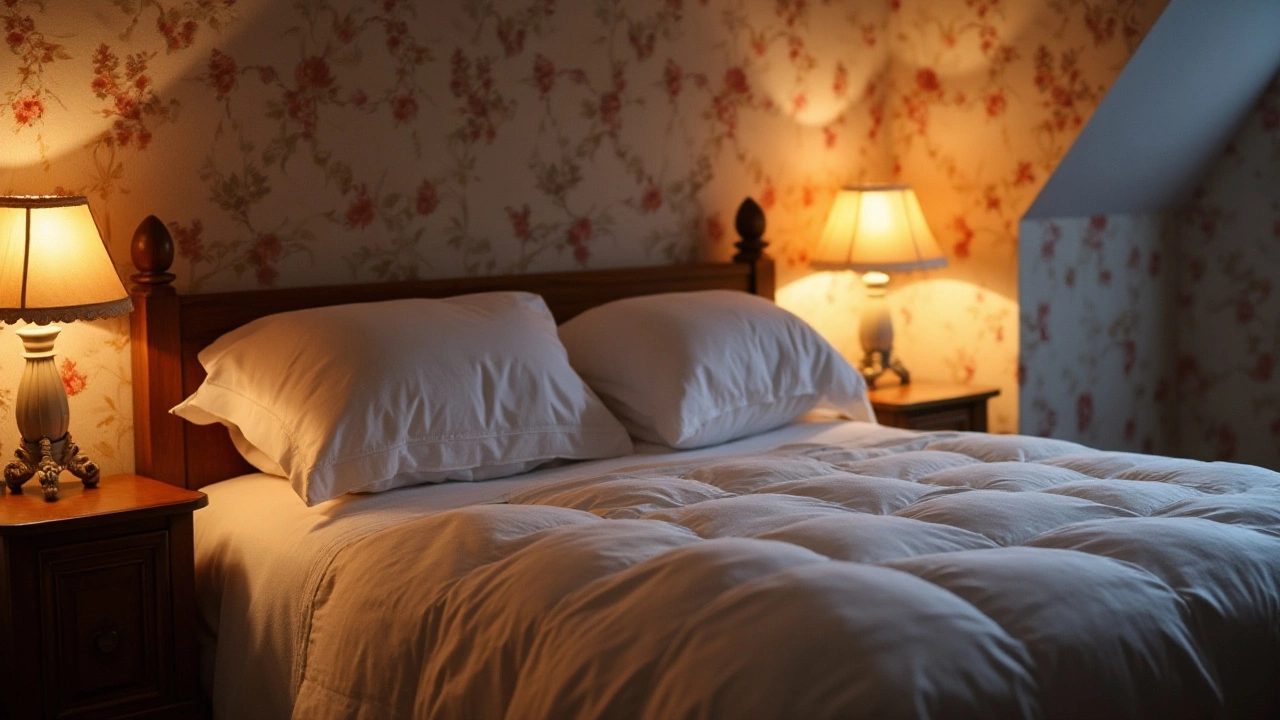When it comes to crafting the perfect atmosphere in each room of your home, lighting plays a crucial role. Deciding whether to maintain a uniform lighting scheme throughout your house or to vary it from one space to another depends on several factors, including the functions of each room and your personal style. While a cozy living room might benefit from warm, low lights, a home office requires bright, focused illumination to enhance productivity.
Choosing the right type of light can transform your space, making activities like reading in the bedroom more comfortable or cooking in the kitchen safer and more efficient. The balance of natural and artificial light can also influence your overall comfort and energy usage. This article delves into the specifics of optimizing lighting for each area of your home, highlighting the considerations that make a lighting plan both practical and aesthetically pleasing.
- Understanding Lighting Needs Room by Room
- Types of Lighting and Their Applications
- The Impact of Light Color and Temperature
- Balancing Natural and Artificial Light
- Practical Tips for Effective Lighting Design
Understanding Lighting Needs Room by Room
The discussion about whether lighting should be uniform across a home begins with an essential question: what are the unique needs of each room? In any household, different spaces serve a variety of purposes, demanding an analysis of light in several dimensions—color, temperature, brightness, and source. For instance, the home lighting in your living room often sets the tone for relaxation and social interactions. Here, a combination of ambient and accent lighting can create a warm, inviting atmosphere. Consider incorporating dimmable lights that adapt for any occasion, from cozy movie nights to vibrant gatherings. This ability to modify light levels provides flexibility and enhances the mood, enabling your living room to be functional and stylish under various circumstances.
Kitchens, on the other hand, require a much more functional approach. Bright task lighting, such as LED strips under cabinets, is crucial for food preparation and cooking. Good lighting is not only about style but also safety. Ensuring adequate illumination in areas where you handle sharp objects or hot surfaces mitigates risks. A mix of ambient lighting with task-oriented fixtures can eliminate shadows and improve visibility, positioning the kitchen as both a workspace and a social hub, often acting as the heart of the home.
Moving to the bedroom, you find that lighting design should promote relaxation and rest. Soft, warm lights that mimic natural colors can be utilized to ease the transition between day and night. Bedside lamps or sconces offer practicality, providing light for reading without disturbing a sleeping partner. Moreover, incorporating light with a dimmer switch or smart technology can help adjust the ambiance effortlessly, catering to personal preferences throughout the day and night. This not only adds to comfort but enhances the aesthetic appeal of your personal sanctuary.
In home offices, the focus shifts back to productivity. Bright, cool-toned lighting reduces eye strain and keeps you alert, making it easier to concentrate during work hours. Task lighting, such as desk lamps with adjustable arms, should be equipped with shades to direct light precisely where it's needed, minimizing glare on screens and workspaces. Equally important, natural light through windows can be a great ally, so arrange your desk to take advantage of this free and mood-enhancing resource.
"Good lighting is not only about avoiding the dark but about illuminating potential," says lighting designer James Adams, known for his innovative approach to blending function with form in various interior spaces.
Bathrooms also demand special consideration, often requiring a balance between practicality and style. Bright, even light that mimics daylight can make the space feel clean and refreshing, helping with tasks like shaving or makeup application. Placing lights either side of a mirror ensures even illumination, helping avoid shadows and enhancing functionality. Strategically positioned LED or CFL fixtures provide efficiency and longevity, crucial in a moisture-prone environment.
Lastly, don’t forget transitional areas like hallways and staircases. These spaces benefit from consistent light flow, guiding you safely from one part of the house to another. Subtle, recessed lighting can illuminate these areas softly, preventing any harsh contrasts or dangerous blind spots. With thoughtful planning and recognizing each room's unique needs, you can create a comprehensive lighting plan that accentuates the best features of all your spaces.
Types of Lighting and Their Applications
When delving into the world of home lighting, understanding the different types of lighting and their specific applications is crucial. Essentially, lighting can be categorized into three main types: ambient, task, and accent, each serving distinct purposes. Ambient lighting, often referred to as general lighting, is meant to illuminate an entire room. It usually comes from central fixtures such as chandeliers, ceiling lamps, or wall-mounted lights that set the overall mood and comfort level of a space. Meanwhile, using dimmers with ambient lights can also enhance their versatility, allowing you to adjust the brightness based on the time of day or occasion.
Task lighting, on the other hand, is all about providing focus to activities such as reading, cooking, or working at a desk. It's the direct light source that hangs over your kitchen island or the lamp placed beside your favorite reading armchair. For task lighting to be truly effective, it must be positioned correctly without causing strain or shadow. The flexibility of task lighting options like adjustable desk lamps or under-cabinet lighting in kitchens makes them a practical choice in personalized home environments. Interestingly, a survey by the American Lighting Association found that well-lit areas enhance productivity by up to 30%, underscoring the importance of effective task lighting in homes.
Accent lighting adds drama and visual interest by highlighting specific features, such as artwork, architecture, or even a beautifully landscaped path outside. With the use of spotlights, recessed lights, or wall washes, accent lighting draws attention to your house’s focal points, levying a sophisticated touch to any setting. This type of lighting often requires meticulous planning to ensure it complements the space without overwhelming it. According to design expert John Cullen, "Accent lighting can elevate design, drawing the eye to specific nuances and textures." Such lighting solutions create depth and dimensions to rooms, adding a layer of complexity to simple spaces.
| Type of Lighting | Application |
|---|---|
| Ambient | Overall room illumination |
| Task | Focused light for activities |
| Accent | Highlighting specific elements |
Moreover, each type of lighting can play a crucial role in the energy efficiency of your home. Modern lighting technology offers a variety of lighting design solutions that are increasingly energy-efficient. LED lights, for example, are not only long-lasting but consume substantially less electricity than traditional incandescent bulbs. Incorporating dimmable LEDs into both ambient and task lighting can further enhance energy savings. The energy use in a well-lit home with LED bulbs is reported to be approximately 75% less than that of homes using conventional lighting, according to the U.S. Department of Energy. Such savings can significantly reduce the electricity costs over time.

The Impact of Light Color and Temperature
When pondering the ambiance of your home, light color and temperature are more significant than most might realize. Light color refers to the hue emanating from the bulb, often described as warm, cool, or daylight. These aren't merely aesthetic choices, as they can deeply influence mood and functionality in a living space. Warm lights, typically found in the 2700K to 3000K range, infuse a room with a cozy and relaxing atmosphere, perfect for living areas and bedrooms where unwinding after a long day is key. A sense of intimacy and warmth becomes prominent with this lighting.
On the opposite end, we have cool lights, emitting blue tones and ranging from 4000K to 5000K. These are often favored for workspaces, such as home offices or kitchens, where clarity and attentiveness are crucial. Cool light fosters alertness, simulating daylight and helping one stay focused. Studies have consistently found that exposure to cooler light can enhance cognitive function and productivity, making it a strategic choice for areas requiring precision and detail-oriented tasks. Meanwhile, daylight bulbs, typically rated at around 6000K, aim to mimic the brightness of natural daylight and can be ideal for utility areas like basements or garages.
"Choosing the right light color and temperature is as crucial as choosing the right paint color for the walls," says lighting expert Jane Slade. "It defines the purpose and vibe of a space."
Understanding the science behind light colors also involves evaluating the Color Rendering Index (CRI), a metric that assesses how accurately a light source reveals the colors of various objects it illuminates. Higher CRI, close to 100, means better color representation, which can be crucial in settings where color accuracy matters, such as art studios or kitchens where meals are prepared. The right blend of light temperature and CRI not only makes colors pop but also impacts the overall perception of a space's cleanliness and warmth.
Moreover, the interplay between natural and artificial light color should not be underestimated. Combining both can create a harmonious balance, as natural light varies in temperature throughout the day from crisp morning light to glowing sunsets, which is replicated using varying light temperatures. Strategically placing artificial lighting to enhance, rather than combat, natural light can yield substantial benefits environmentally and economically, potentially lowering energy costs by reducing reliance on bulbs.
Balancing Natural and Artificial Light
Striking the right balance between natural and artificial home lighting can enhance not just the beauty but also the energy efficiency of your space. Many homes today are designed to maximize daylight, not only to illuminate but also to connect inhabitants more closely with the outside world. Properly harnessing natural light can help reduce the dependency on artificial light, which is particularly beneficial during daylight hours. Innovations like skylights, large windows, and glass doors are common features that invite sunlight into darker corners of the home, creating an open, inviting atmosphere. However, in spaces where natural light is limited or nonexistent, supplementary artificial lights become crucial to ensure the room is sufficiently lit.
“Good lighting is a kind of good company. It doesn’t intrude, doesn’t dominate, but it helps you to focus and enjoy the things you do.” - Peter Coughter
Incorporating artificial lighting solutions is where creativity and functionality meet, especially during the evening or on gloomy days. One efficient approach is layering different kinds of lights. This method involves combining ambient, task, and accent lighting to not only fill the voids where natural light falls short but also to highlight interesting architectural features and create distinct moods within rooms. For example, pendant lights can provide ambient lighting while focused under-cabinet lights ensure full illumination on kitchen worktops, thus optimizing the space for varied use.
The color temperature of artificial lights plays a pivotal role in creating harmony with natural light. During the daytime, using artificial lights that mimic daylight (around 5000K) can create a seamless transition, reducing eye strain and maintaining a consistent feel throughout the home. In the evening, warmer lights (below 3000K) can complement the natural light’s fading intensity, creating a cozy atmosphere conducive to relaxation. It’s important to note how different placements and shade choices affect this harmony. Some LED lights even offer adjustable settings to move between daylight and warm tones, adapting to the time of day and the activity within the space.
For those looking to make data-driven decisions, it’s useful to understand how lighting affects energy consumption. Consideration should be given to energy-efficient bulbs like LEDs or CFLs, which consume significantly less power compared to conventional bulbs. According to the U.S. Department of Energy, LED lights use at least 75% less energy and last 25 times longer than incandescent lighting. Strategically placing these bulbs throughout your home can effectively minimize energy bills, making it not only a sustainable choice but also an economical one.
Bringing these elements together can transform your home into a welcoming, comfortable place that serves all your needs without neglecting style. Whether you seek vibrant illumination for workspaces or soft lighting for rest areas, the balance between natural and artificial light is key. Carefully planning this balance will ensure that each room is not only fit for purpose but also aesthetically pleasing, enhancing not only how you interact with each space but also your overall well-being.

Practical Tips for Effective Lighting Design
Designing the perfect lighting for your home involves a mix of creativity and strategy, ensuring that each room is not only functional but also aesthetically pleasing. When tackling home lighting, the first step is understanding the distinct needs of each space. For practicality, begin by evaluating the activities that occur in particular rooms, such as cooking in the kitchen or reading in the bedroom. This assessment can inform your choices, guiding whether you need ambient, task, or accent lighting. Keep in mind that layered lighting—using multiple light sources in a single room—can offer the flexibility to adapt to different needs and moods.
An effective lighting design considers the psychological effects colors and light temperatures have on inhabitants. Warm light can create a cozy, intimate atmosphere perfect for bedrooms and living rooms. Cooler lights, on the other hand, are suitable for spaces where clarity and concentration are priorities, such as home offices or kitchens. Remember, too much variation in light color throughout the home can be jarring, so aim for a harmonious blend that supports seamless transitions from one room to another.
Smart lighting solutions represent another angle to consider. With advancements in technology, various systems allow you to adjust the intensity and hue of the lighting remotely. This added layer of control can make it easier to customize lighting solutions according to time of day or specific tasks. Integrating smart lighting into your lighting design not only provides convenience but can also contribute to energy savings. According to a study by the U.S. Department of Energy, homes that incorporate smart lighting systems see a reduction in electricity usage by up to 30%.
"Lighting can transform a space by enhancing colors, altering mood, and even changing a room’s perceived size," says renowned interior designer Jonathan Adler. "The right lighting makes everything look better."
To maintain a design that is efficient yet stylish, consider the following checklist when planning your home lighting:
- Evaluate each room’s purpose and necessary lighting type.
- Choose light bulbs with the appropriate brightness and temperature.
- Incorporate a mix of ambient, task, and accent lighting.
- Consider smart lighting options for added convenience and efficiency.
- Ensure that light fixtures match with the room's style and function.
Finally, don't overlook the importance of working with existing elements like mirrors and windows which can amplify natural light, reducing the need for artificial sources. Positioning mirrors to reflect light can make small rooms appear larger and brighter. As you refine your lighting design, remember the principles of balance and flexibility to cater aptly to the dynamic needs of a modern home.
